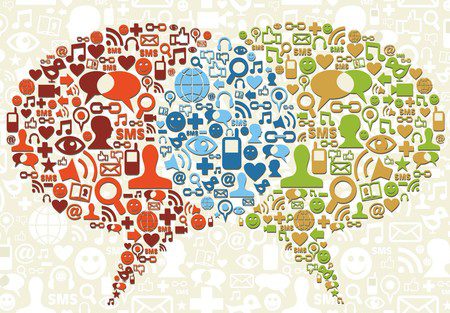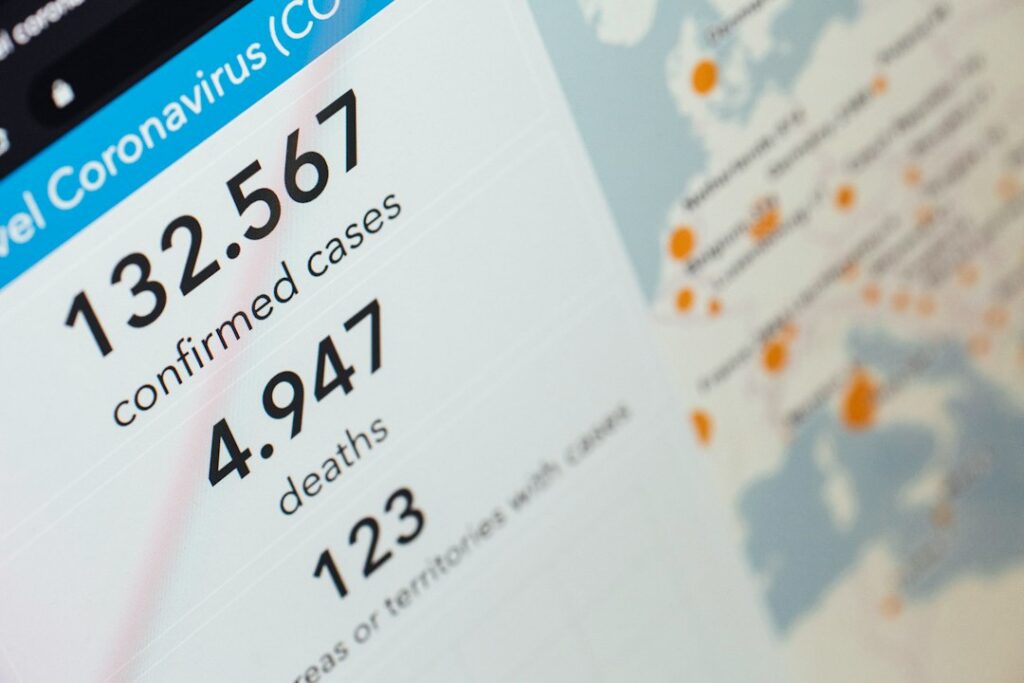Communication is an essential aspect of human interaction. It allows us to convey our thoughts, ideas, and emotions to others, fostering understanding and building relationships. With the advent of globalization, the need for effective communication has become even more crucial. People from different cultures and backgrounds are now interacting on a daily basis, whether it be for business, travel, or personal reasons. This increased interconnectedness has led to the emergence of new technologies that have revolutionized the way we communicate.
Key Takeaways
- Dutton World Speedwords Language can revolutionize communication by simplifying language and increasing speed
- Translation services are crucial in bridging the language barrier and expanding global communication
- Localization is necessary to adapt to cultural differences and avoid misunderstandings
- AI technology, such as chatbots and virtual assistants, are becoming increasingly important in communication
- 24×7 offshoring offers advantages in global communication, but also presents challenges such as language barriers and cultural differences
Dutton World Speedwords Language: A Game-Changer in Communication
One such innovation in communication is the Dutton World Speedwords Language. Created by Reginald J.G. Dutton in the 1920s, this universal language was designed to facilitate efficient communication between people who speak different languages. The language uses a system of symbols to represent words and concepts, allowing for quick and easy understanding.
The Dutton World Speedwords Language has the potential to be a game-changer in communication. It eliminates the need for translation services and language barriers, making it possible for people from different linguistic backgrounds to communicate effectively. This can have a profound impact on various aspects of society, from business negotiations to international diplomacy.
Translation Services: Bridging the Language Barrier
While the Dutton World Speedwords Language offers a universal solution to communication, translation services still play a crucial role in bridging the language barrier. These services are essential for written and spoken communication, allowing people to understand and be understood in their native languages.
Translation services have become increasingly important in our globalized world. They enable businesses to expand into international markets by translating their content into different languages. They also facilitate cultural exchange and understanding by making literature, films, and other forms of media accessible to people around the world.
Localization: Adapting to Cultural Differences
| Metrics | Description |
|---|---|
| Cultural Awareness | Percentage of employees who have completed cultural awareness training |
| Localization Quality | Number of localization errors found during testing |
| Customer Satisfaction | Percentage of customers who rate the localized product positively |
| Time to Market | Number of days it takes to complete localization process |
| Translation Cost | Total cost of translation services for localization |
In addition to translation services, localization is another important aspect of effective communication in a globalized world. Localization involves adapting content to meet the cultural and linguistic needs of a specific audience. It goes beyond mere translation and takes into account local customs, idioms, and cultural references.
Localization is essential for businesses that want to succeed in international markets. It ensures that their products and services resonate with local consumers and avoids any cultural misunderstandings or faux pas. By adapting content to the local culture, businesses can build trust and establish strong relationships with their target audience.
AI and Communication: The Rise of Chatbots and Virtual Assistants
Artificial intelligence (AI) has also had a significant impact on communication. AI-powered chatbots and virtual assistants are becoming increasingly popular for both personal and business use. These tools can provide instant responses to queries, automate communication processes, and even simulate human-like conversations.
The rise of AI-powered communication tools has the potential to revolutionize customer service and support. Chatbots can handle basic inquiries, freeing up human agents to focus on more complex tasks. Virtual assistants can help with scheduling, reminders, and other administrative tasks, making our lives more efficient and productive.
24×7 Offshoring: The Advantages and Challenges of Global Communication

With the globalization of business, the practice of 24×7 offshoring has become increasingly common. This refers to the outsourcing of communication services to countries in different time zones, allowing for round-the-clock communication and support.
The advantages of 24×7 offshoring are clear. It enables businesses to provide uninterrupted customer service, regardless of the time zone their customers are in. It also allows for cost savings, as labor costs may be lower in certain countries.
However, 24×7 offshoring also presents challenges. Language barriers can make communication difficult, leading to misunderstandings and inefficiencies. Cultural differences can also impact communication styles and expectations. It is important for businesses to address these challenges by providing language and cultural training to their offshore teams.
Language Learning: The Key to Effective Communication
While translation services, localization, and AI-powered tools can facilitate communication, learning a new language is still essential for effective communication in a globalized world. Learning a new language not only helps to bridge the language barrier but also promotes cultural understanding and empathy.
Language learning can be done through formal education or self-study. There are numerous resources available, from language courses and textbooks to online platforms and language exchange programs. By investing time and effort into learning a new language, individuals can enhance their communication skills and open up new opportunities for personal and professional growth.
Translators: The Importance of Human Expertise in Communication
While AI-powered translation tools are becoming more sophisticated, human expertise is still essential for effective communication, especially in creative fields such as literature and poetry. Human translators can provide context, cultural understanding, and nuance that AI-powered tools cannot replicate.
Translating creative content requires more than just a literal translation of words. It involves capturing the essence of the original work, preserving its style, tone, and cultural references. Human translators are skilled in navigating these complexities and ensuring that the translated work resonates with the target audience.
Transcription Services: Making Audio and Video Content Accessible to All
In the age of online video content, transcription services have become increasingly important. These services make audio and video content accessible to people with hearing impairments by providing captions or subtitles. They can also be used to translate content into different languages, making it accessible to a global audience.
Transcription services play a crucial role in ensuring equal access to information and entertainment. They enable people with hearing impairments to enjoy movies, TV shows, and online videos. They also make it possible for content creators to reach a wider audience by providing subtitles in different languages.
The Future of Communication with Dutton World Speedwords Language
In conclusion, the need for effective communication has increased with globalization. The emergence of new technologies has revolutionized communication, making it easier and more efficient. The Dutton World Speedwords Language offers a universal solution to communication, while translation services and localization help bridge the language and cultural barriers.
AI-powered tools like chatbots and virtual assistants are becoming increasingly popular, providing instant responses and automating communication processes. 24×7 offshoring allows for round-the-clock communication and support, although it presents challenges such as language barriers and cultural differences.
Language learning remains essential for effective communication, promoting cultural understanding and empathy. While AI-powered translation tools are advancing, human expertise is still crucial, especially in creative fields. Transcription services make audio and video content accessible to all, ensuring equal access to information and entertainment.
The future of communication holds great promise with the Dutton World Speedwords Language and advancements in technology. However, it is important to remember that human expertise and cultural understanding will always be essential for effective communication. By embracing these advancements while valuing human connection, we can create a more connected and inclusive world.
Check out this fascinating article on the benefits of Dutton World Speedwords Language in enhancing communication efficiency. It explores how this innovative language system can revolutionize the way we communicate and break down language barriers. Discover how Dutton World Speedwords Language can be a game-changer in various industries and improve global communication. Read the article here.
FAQs
What is Dutton World Speedwords Language?
Dutton World Speedwords Language is a constructed language created by Reginald J. G. Dutton in the 1920s. It is designed to be a universal language that is easy to learn and use.
How is Dutton World Speedwords Language different from other languages?
Dutton World Speedwords Language is different from other languages in that it is a constructed language, meaning it was intentionally created rather than evolving naturally over time. It is also designed to be easy to learn and use, with a simplified grammar and a small vocabulary of only 1,000 words.
Who uses Dutton World Speedwords Language?
Dutton World Speedwords Language has a small but dedicated following of enthusiasts who use it for communication and as a tool for language learning. It is not widely used in mainstream society.
What are the benefits of learning Dutton World Speedwords Language?
The benefits of learning Dutton World Speedwords Language include its simplicity and ease of use, as well as its potential as a tool for language learning. It can also be a fun and interesting hobby for those interested in constructed languages.
Is Dutton World Speedwords Language recognized as an official language?
Dutton World Speedwords Language is not recognized as an official language by any government or international organization. It is considered a constructed language and is not widely used in mainstream society.
Communication is commonly defined as the transmission of information. Its precise definition is disputed and there are disagreements about whether unintentional or failed transmissions are included and whether communication not only transmits meaning but also creates it.
Models of communication are simplified overviews of its main components and their interactions. Many models include the idea that a source uses a coding system to express information in the form of a message. The message is sent through a channel to a receiver who has to decode it to understand it. The main field of inquiry investigating communication is called communication studies.
A common way to classify communication is by whether information is exchanged between humans, members of other species, or non-living entities such as computers. For human communication, a central contrast is between verbal and non-verbal communication. Verbal communication involves the exchange of messages in linguistic form, including spoken and written messages as well as sign language.
Non-verbal communication happens without the use of a linguistic system, for example, using body language, touch, and facial expressions. Another distinction is between interpersonal communication, which happens between distinct persons, and intrapersonal communication, which is communication with oneself. Communicative competence is the ability to communicate well and applies to the skills of formulating messages and understanding them.
Non-human forms of communication include animal and plant communication. Researchers in this field often refine their definition of communicative behavior by including the criteria that observable responses are present and that the participants benefit from the exchange. Animal communication is used in areas like courtship and mating, parent–offspring relations, navigation, and self-defense.
Communication through chemicals is particularly important for the relatively immobile plants. For example, maple trees release so-called volatile organic compounds into the air to warn other plants of a herbivore attack. Most communication takes place between members of the same species.
The reason is that its purpose is usually some form of cooperation, which is not as common between different species. Interspecies communication happens mainly in cases of symbiotic relationships. For instance, many flowers use symmetrical shapes and distinctive colors to signal to insects where nectar is located. Humans engage in interspecies communication when interacting with pets and working animals.
Human communication has a long history and how people exchange information has changed over time. These changes were usually triggered by the development of new communication technologies. Examples are the invention of writing systems, the development of mass printing, the use of radio and television, and the invention of the internet. The technological advances also led to new forms of communication, such as the exchange of data between computers.
Definitions
The word communication has its root in the Latin verb communicare, which means ‘to share‘ or ‘to make common‘.[1] Communication is usually understood as the transmission of information:[2] a message is conveyed from a sender to a receiver using some medium, such as sound, written signs, bodily movements, or electricity.[3]
Sender and receiver are often distinct individuals but it is also possible for an individual to communicate with themselves. In some cases, sender and receiver are not individuals but groups like organizations, social classes, or nations.[4] In a different sense, the term communication refers to the message that is being communicated or to the field of inquiry studying communicational phenomena.[5]
The precise characterization of communication is disputed. Many scholars have raised doubts that any single definition can capture the term accurately. These difficulties come from the fact that the term is applied to diverse phenomena in different contexts, often with slightly different meanings.[6] The issue of the right definition affects the research process on many levels. This includes issues like which empirical phenomena are observed, how they are categorized, which hypotheses and laws are formulated as well as how systematic theories based on these steps are articulated.[7]
Some definitions are broad and encompass unconscious and non-human behavior.[8] Under a broad definition, many animals communicate within their own species and flowers communicate by signaling the location of nectar to bees through their colors and shapes.[9] Other definitions restrict communication to conscious interactions among human beings.

[10] Some approaches focus on the use of symbols and signs while others stress the role of understanding, interaction, power, or transmission of ideas. Various characterizations see the communicator’s intent to send a message as a central component. In this view, the transmission of information is not sufficient for communication if it happens unintentionally.[11]
A version of this view is given by philosopher Paul Grice, who identifies communication with actions that aim to make the recipient aware of the communicator’s intention.[12] One question in this regard is whether only successful transmissions of information should be regarded as communication.[13] For example, distortion may interfere with and change the actual message from what was originally intended.[14] A closely related problem is whether acts of deliberate deception constitute communication
According to a broad definition by literary critic I. A. Richards, communication happens when one mind acts upon its environment to transmit its own experience to another mind.
Another interpretation is given by communication theorists Claude Shannon and Warren Weaver, who characterize communication as a transmission of information brought about by the interaction of several components, such as a source, a message, an encoder, a channel, a decoder, and a receiver.[17]

The transmission view is rejected by transactional and constitutive views, which hold that communication is not just about the transmission of information but also about the creation of meaning. Transactional and constitutive perspectives hold that communication shapes the participant’s experience by conceptualizing the world and making sense of their environment and themselves.Researchers studying animal and plant communication focus less on meaning-making. Instead, they often define communicative behavior as having other features, such as playing a beneficial role in survival and reproduction, or having an observable response.

 Afrikaans
Afrikaans Albanian
Albanian Amharic
Amharic Arabic
Arabic Armenian
Armenian Azerbaijani
Azerbaijani Basque
Basque Belarusian
Belarusian Bengali
Bengali Bosnian
Bosnian Bulgarian
Bulgarian Catalan
Catalan Cebuano
Cebuano Chichewa
Chichewa Chinese (Simplified)
Chinese (Simplified) Chinese (Traditional)
Chinese (Traditional) Corsican
Corsican Croatian
Croatian Czech
Czech Danish
Danish Dutch
Dutch English
English Esperanto
Esperanto Estonian
Estonian Filipino
Filipino Finnish
Finnish French
French Frisian
Frisian Galician
Galician Georgian
Georgian German
German Greek
Greek Gujarati
Gujarati Haitian Creole
Haitian Creole Hausa
Hausa Hawaiian
Hawaiian Hebrew
Hebrew Hindi
Hindi Hmong
Hmong Hungarian
Hungarian Icelandic
Icelandic Igbo
Igbo Indonesian
Indonesian Irish
Irish Italian
Italian Japanese
Japanese Javanese
Javanese Kannada
Kannada Kazakh
Kazakh Khmer
Khmer Korean
Korean Kurdish (Kurmanji)
Kurdish (Kurmanji) Kyrgyz
Kyrgyz Lao
Lao Latin
Latin Latvian
Latvian Lithuanian
Lithuanian Luxembourgish
Luxembourgish Macedonian
Macedonian Malagasy
Malagasy Malay
Malay Malayalam
Malayalam Maltese
Maltese Maori
Maori Marathi
Marathi Mongolian
Mongolian Myanmar (Burmese)
Myanmar (Burmese) Nepali
Nepali Norwegian
Norwegian Pashto
Pashto Persian
Persian Portuguese
Portuguese Punjabi
Punjabi Romanian
Romanian Russian
Russian Polish
Polish Samoan
Samoan Scottish Gaelic
Scottish Gaelic Serbian
Serbian Sesotho
Sesotho Shona
Shona Sindhi
Sindhi Sinhala
Sinhala Slovak
Slovak Slovenian
Slovenian Somali
Somali Spanish
Spanish Sundanese
Sundanese Swahili
Swahili Swedish
Swedish Tamil
Tamil Tajik
Tajik Telugu
Telugu Turkish
Turkish Ukrainian
Ukrainian Urdu
Urdu Uzbek
Uzbek Thai
Thai Vietnamese
Vietnamese Welsh
Welsh Xhosa
Xhosa Yiddish
Yiddish Yoruba
Yoruba Zulu
Zulu